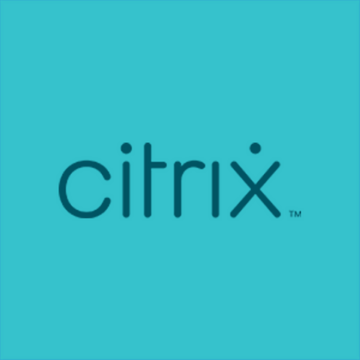When you think about optimizing your Digital Workspace, you’re probably thinking about several things. One of the most time-consuming parts of managing and maintaining a Citrix XenApp and XenDesktop environment, whether it’s a Provisioning Services or Machine Creation Services, on-premises, hybrid and/or full cloud deployment – is the application maintenance of the golden image.
At Citrix Synergy last year, Ron Oglesby showed a nice example how all the processes come together in the new Digital Workspace. Taking advantage of innovative solutions will optimize the maintenance process and save you a lot of time. In fact, you’ll have more time left to do something more fun around innovation of the end-user experience!
Combining the strength of the App Layering product with the optimizations through Citrix Workspace Environment Management and the Citrix Optimizer tools put the new Digital Workspace on steroids.
Using Citrix App Layering technology combined with the cloud simplifies the process around the Virtual Desktop. Therefore, you’ll keep the image clean and make it possible to instantly add virtual applications without rebooting the machines. In the Netherlands, we call that a WIN!
The Enterprise Layer Management (ELM) server can now be built up in the Azure Infrastructure-as-a-Service through remote (Azure) PowerShell, and the different OS/App/Platform layers will be placed in the Azure storage account. The Office 365 User Layers can be placed in their own share or even the same SMB / UNC share as the elastic layers, allowing you to store unique Office data for the users.

Did you know?
- App Layering now supports the Caching of Office 365 – Exchange Online mailboxes, through the new Office 365 User Layer feature for Windows 7 and 10 (64 bits) non-persistent VDIs.
- You can also use App Layering from inside Citrix Cloud to manage on-premises workloads.
- App Layering supports VMware View Composer as provisioning method
- A hybrid connection, such as an Azure ExpressRoute, NetScaler SD-WAN, or a site-to-site connection between your corporate and Azure networks, is recommended for accessing the Management Console on the appliance
- Using premium storage is highly recommended for the ELM and layering images to accelerate the speed
- App Layering is free to use for Enterprise and Platinum customers for on-premises environments or Infrastructure-as-a-Service implementations
- It also supports XenServer, Microsoft Hyper-V, Nutanix, and VMware vSphere hypervisors
- The direct link to the Citrix Cloud App Layering service is https://layering.cloud.com
- It can layer any application; there is no need for applications to be installed on the OS image itself. This exceeds the number of supported virtualized applications when using App-V, for example.Note: With Citrix App Layering technology, you’ve got no possibility for isolation / bubble apps, which you can provide with Microsoft App-V – Citrix App Layering merges the layers without isolation.
- Underlying applications should be layered first, and then selected as prerequisite layers when you go to create a layer for the subsequent application
- A standard Windows network file server in Azure will perform significantly better than an on-premises file share. Even though the Azure File services feature is not supported, you can use an existing Windows server with network file-sharing capabilities or create a new file server in the Azure environment.
- To deploy and configure the Citrix App Layering appliance, you will need credentials for an account that has administrative access to your Azure subscription.
- App Layering is designed to work with Azure’s new Resource Management (ARM) model. It does not support Azure’s classic deployment model. All resources, such as virtual network, file shares, and OS machines with which App Layering will work must be created with Azure Resource Manager.
- The Citrix App Layering appliance uses local storage for both temporary files and finalized layers. The more layers you create, the more space you’ll need attached to the appliance. However, if you run low on space, you can expand the size of the current disk, or add other disks to the appliance as needed.
- The file share connected to the appliance is used for upgrades, Elastic Layers, and cross-platform publishing. This space is easy to expand, if needed
VDILIKEAPRO results on Application Layering
You’ll will find interesting results on application virtualization, in the awesome VDILIKEAPRO Community survey from last year. I would like to share 3 results around application layering, which I found interesting, regarding this article.
It’s interesting to see that it’s still in the starting phase – the discovery phase. Therefore, I think personally that people aren’t aware of the solution yet – or just haven’t got the knowledge around the Layering technology. I’ll think that this change in the near 1 or 2 years, which you also can see in the survey results of question number 3. Hope that this article will solve this a bit…
“Do you currently use an application layering solution in VDI/SBC?”

“How are Windows OS and applications installed, updated and managed?”
“We are pleased to see that IT Admins are steering clear from making manual changes to their Master images. This cumbersome and error-prone way of working can seriously impact the performance and uptime of your environment, while plenty of alternatives already exist that can automate these tasks.”

“What are your most important Workspace/EUC initiatives for 2017/2018? (Multiple choice)”
Quite interesting numbers, if you ask me. I expect that this number will grow even further in 2018 – 2019. I see Citrix App Layering as one of the essential parts of the new Digital Workspace. Migrating to the cloud doesn’t mean lifting and lifting on premises workloads to the cloud. It also includes optimization – taking full advantage of all the new services that the cloud can deliver – with the main goal to optimize processes. That’s where the benefit can be reached in the long term!

So, what is Citrix App Layering?
Citrix App Layering separates applications from the OS and splits them into three main types of layers, each of which is stored as a virtual disk. The base (OS) layer contains the OS; the App layer is where the application files and registry keys are stored. And, finally, the User layer is where the user data, including profiles, resides.
The layered images hold the following 4 layers:

Activate the Office365 (caching) User Layer for VDI
User Layers let you persist user profile settings, data, and user-installed applications in non-persistent VDI environments. User Layers are created when you configure the layered image to use Elastic Layering and User Layers. This enables that layered image to support the connection to and creation of User/Office 365 layers.
A user logs in to their desktop for the first time, and a User Layer is created for them. From then on, the user’s data and settings are saved in the User Layer along with any applications that the user installs locally on their desktops.
Note: It’s currently only supported for Windows 7 (64 bit) and 10 (64 bit) VDIs, such as for XenDesktop and VMware Horizon. You can use FSLogix O365 Containers – or Liquidware to solve this in the meantime for Multi-Session non-persistent Citrix XenApp environments.
Some extra notes around Office 365 layers:
-
- The Office application layer must be included in the image template and deployed in the layered image.
- It only redirects the local Microsoft Outlook folder
- Windows 10 1709 is currently not supported.
- “%USERPROFILE%\AppData\Local\Microsoft\Outlook” is the data location captured and is NOT capturing Search Indexes, OneDrive data, or Skype for Business data.
- Citrix User Profile Manager (UPM) is required to use Office 365 User Layer.
- Make sure that %USERPROFILE%\AppData\Local\Microsoft\Outlook is in the exclusion list.
When creating the Layered Image, give it a name and a size of the thin-provisioned disk. Enable Application Layering and Office 365 as User layer to activate the New Persistent Outlook Caching functionality!
You first need to create a new Windows 10 OS Layer before you can proceed to the next steps.
The following steps are optional and are only needed when you want to use the Office 365 User Layering technology.
Note: You’ll need an Enterprise Agreement within Azure in order to use Windows 10 VDIs.

Go through the setup, just the same that I mentioned for Server 2016. Therefore now with the User Layer – Office 365 activated.
Click on – Publish the Layered Image

Follow the same JSON Procedure in Azure for the imaging deployment.
Create the Machine Catalog and Delivery Group, based on the new Windows 10 Template Virtual Machine, in the Citrix Cloud XenApp and XenDesktop Service Manage portal.
Office 365 User Layering – background insights
You can check and see the background process around the User Layers – when a user logs on to the new Desktop environment by opening Disk Management (diskmgmt.msc).
The Office 365 User Layer will automatically be attached to the Desktop at login and used to store the Office 365 – Outlook caching files.
Note: You can assign a drive letter to the Virtual Disk to check what’s inside the Virtual Hard Disk.

The files will be played on the Elastic Layering SMB Storage. The VHD will standard be named as, <USERNAME>_O365.vhd

You can mount the file and see that only the %USERPROFILE%\AppData\Local\Microsoft\Outlook folder is redirected.
The User Layer will be un-mounted while logging off of the Citrix Session and re-attached when you log back on, which makes the Outlook profile and caching Outlook files persistent!
Also, make sure to setup the Outlook 2016 slider policy to avoid overloads of caching storage.

The policy can be found here:
User Configuration -> expand Administrative Templates -> Microsoft Outlook 2016 or 2013 -> Account Settings -> Exchange Double -> Cached Exchange Mode

Please start optimizing the Digital Workspace further with Citrix Profile Management (UPM). Make sure that %USERPROFILE%\AppData\Local\Microsoft\Outlook is in the exclusion list. This resides in the VHD Mounting directory!
Visit the comprehensive article from Carl Stalhood for configuring Citrix UPM.
Office 365 User Layering – See it yourself demo
That’s it for now. I’ll hope to see you back soon!
Cheers,
Christiaan Brinkhoff
Note: This Citrix Blog article is a small piece of the original article, which I’d posted last week on christiaanbrinkhoff.com. Interested in the complete article? Read it here.
Citrix TechBytes – Created by Citrix Experts, made for Citrix Technologists! Learn from passionate Citrix Experts and gain technical insights into the latest Citrix Technologies.
Click here for more TechBytes and subscribe.
Want specific TechBytes? Let us know! tech-content-feedback@citrix.com



